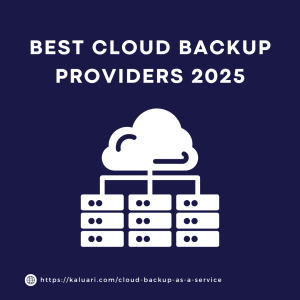Your website being down or unreachable is a nightmare scenario. Even brief periods of website downtime can have devastating business impacts. According to industry studies, the average cost of website outages for relatively small businesses cost of downtime falls into the range of $137 to $427 per minute. In contrast, for larger businesses, the downtime can cost over $16,000 per minute ($1 million per hour) for just a short outage.
Some of the most expensive downtimes include the 12-hour downtime in 2015. Apple lost approximately $25 million in sales as a result. Facebook 2021 lost more than $60 million when it had a 14-hour downtime. They lost a whooping
Can you afford extended downtime? Probably not if you want your business to survive and thrive. That’s why taking proactive measures is critical to maximize your website uptime.
The High Costs of Website Downtime
Website outages demand attention because they directly hurt your bottom line. Without availability, you suffer:
- Loss of sales – Both ongoing e-commerce transactions and incoming leads/calls from new prospects.
- Damage to brand reputation – Users lose trust whenever they encounter errors trying to reach your site.
- Lower search rankings – Google factors uptime and speed into rankings, so downtime hurts SEO.
- Poor customer experience – Visitors get frustrated when faced with 404 errors, slow load times, or outright downtime. They may not give you a second chance.
- Revenue impact – Calculate your typical hourly revenue, then multiply the potential loss based on your downtime.
Additionally, your IT/web team must scramble in crisis mode whenever the site goes down, removing focus from other priorities. The costs of website downtime, both direct and indirect, are massive.
What are the top Causes of Website Outages?
To prevent website downtime, you have to understand what causes it in the first place:
- Server failures – Hardware issues like failed drives, motherboard problems, and power supply defects. Software crashes. Network connectivity issues.
- Traffic spikes – Unexpected visitor surges can overload your server resources and crash sites.
- DDoS attacks – Malicious requests bombard servers and render sites inaccessible.
- Software bugs – Flaws in code, scripts, or database design that causes crashes.
- Configuration errors – Problems with DNS, load balancer settings, or failure to renew SSL certificates.
- Back-end service outages – CDNs, databases, payment systems, or other third-party services.
- Power/internet issues – Data center disruptions that are outside your control.
- Human errors – Accidental actions like bad code deploys or configuration changes.
With so many potential points of failure, even extensive precautions sometimes fall short. But modern solutions can mitigate many of these risks.
Cloud Hosting Delivers Built-In High Reliability
One of the most impactful solutions to maximize uptime is migrating from traditional hosting infrastructure to cloud platforms like kaluari server hosting. These provide high availability architecture out-of-the-box to achieve 99.95% or better uptimes.
Cloud hosting inherently minimizes downtime risks through:
- Geographic redundancy – Resources distributed across isolated data centers in different regions. If one fails, traffic routes to another.
- Auto-scaling groups – Server capacity increases/decreases dynamically based on traffic demand. No downtime from overloaded resources.
- Load balancing – Requests are distributed intelligently across servers to avoid overload and maintain performance.
- Automated failover – If a server goes down, cloud platforms automatically launch a new one to take its place within minutes.
- Regular data backups – Cloud platforms automate backup tasks for disaster recovery.
- DDoS protection – Cloud providers have massive bandwidth to absorb attacks and scrub traffic before it hits your servers.
Proactive Monitoring
Detecting issues proactively is equally essential. With real-time monitoring, you can identify potential problems before they cause downtime. Modern monitoring tools like Datadog provide:
- Uptime monitoring – Get alerts if ping tests detect your unreachable website.
- Performance metrics – Measure site load times, server resource usage, and database queries.
- Error rate tracking – Detect upticks in 404s, 500s, and other issues.
- Log analysis – Scan logs in real time for warnings and errors.
- Vulnerability scanning – Check for misconfigurations or software flaws.
- Anomaly detection – Get notified when metrics deviate from standard.
Monitoring provides visibility so your team can respond to problems immediately before downtime occurs.
Other Uptime Strategies
Utilizing a content delivery network (CDN) is another good strategy to improve uptime and performance. CDNs distribute cached copies of resources across edge locations globally. During traffic spikes or attacks, the CDN keeps serving content even if your origin servers are overloaded.
A web application firewall (WAF) helps filter out malicious requests and block common attacks for additional protection. Security enhancements like regular patching and penetration testing also help keep the infrastructure secure against threats.
Finally, a managed hosting provider can take over time-consuming tasks like updates, security controls, server optimization, and monitoring – allowing your team to focus on product development and innovation.




